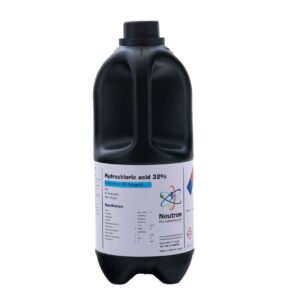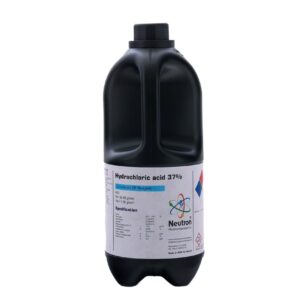Chloroform (trichloromethane) is a volatile, colorless, sweet-smelling solvent produced on a large scale as a precursor to refrigerants and PTFE. It was formerly used as an inhalational anesthetic. It mixes well with many solvents but has low solubility in water (8 g/L at 20°C).
🏭⚗️ Synthesis
Industrially, chloroform is made by heating chlorine with methane (CH₄) or methyl chloride (CH₃Cl) at 400–500 °C, causing free radical chlorination:
CH4 + Cl2 → CH3Cl + HCl
CH3Cl + Cl2 → CH2Cl2 + HCl
CH2Cl2 + Cl2 → CHCl3 + HCl
Further chlorination produces carbon tetrachloride (CCl₄):
CHCl3 + Cl2 → CCl4 + HCl
This process yields a mixture of chloromethanes, which are separated by distillation.
Small-scale production can also use the haloform reaction between acetone and sodium hypochlorite:
3 NaOCl + (CH3)2CO → CHCl3 + 2 NaOH + CH3COONa
🧪 Application
The main industrial use of chloroform is its reaction with hydrogen fluoride to form monochlorodifluoromethane (HCFC-22):
CHCl3 + 2 HF → CHClF2 + 2 HCl
This reaction uses mixed antimony halide catalysts. HCFC-22 is then converted to tetrafluoroethylene, the key precursor of Teflon.
Chloroform is used as a precursor in the synthesis of various organic compounds, including:
Dyes
Pharmaceuticals
Pesticides
⚠️ Safety
Inhalation, ingestion, or skin contact with chloroform is hazardous.
It can cause damage to the liver, kidneys, and central nervous system, and may be fatal at high exposure levels.
Chloroform is unstable in the presence of light and air and may decompose to form phosgene, a highly toxic gas.




